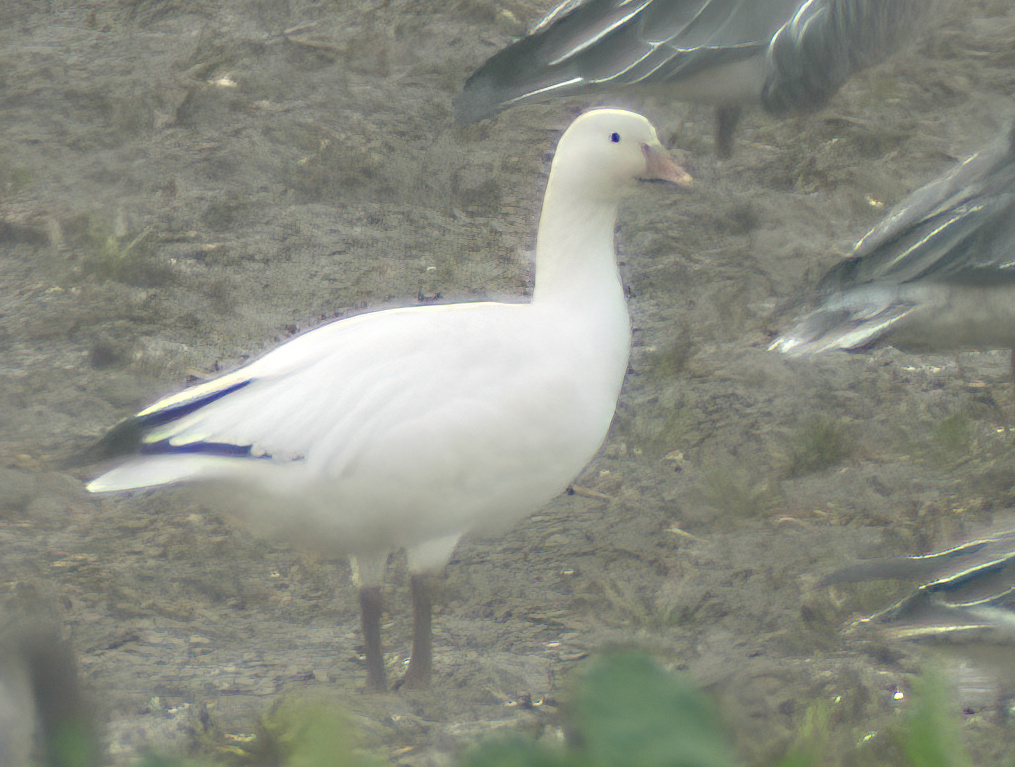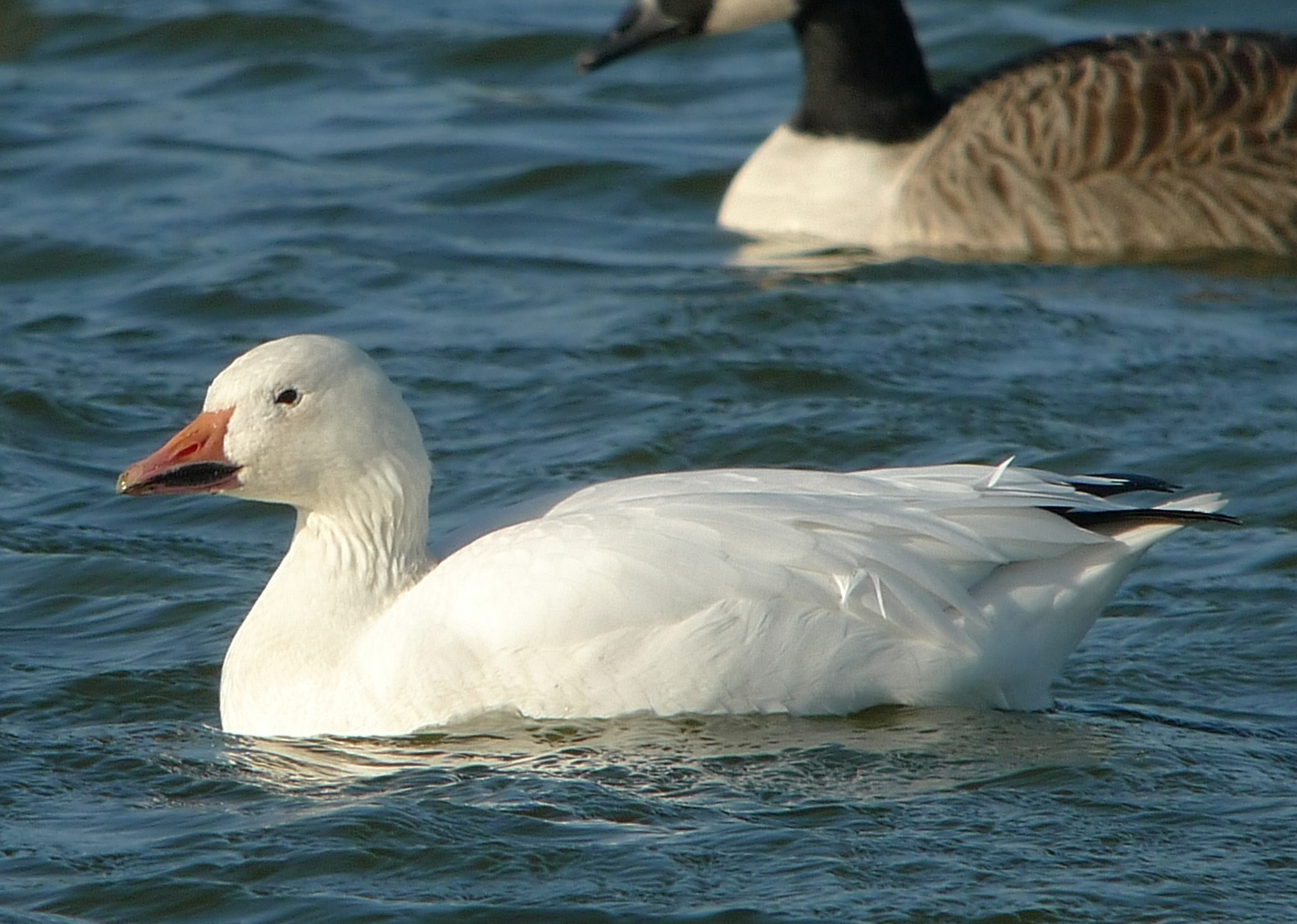Snow Goose Anser caerulescens


There are two subspecies, both of which have occurred in Europe. The nominate race, caerulescens, known as 'Lesser Snow Goose', breeds in NE Siberia, N Alaska and NW Canada and winters in S USA, N Mexico and Japan. It is smaller and slimmer than the heavier-billed 'Greater Snow Goose' atlanticus, which breeds from NW Greenland and NE Canada; this subspecies winters mainly along the Atlantic coast of NE USA between Maryland and N Carolina. Blue-phase birds occur commonly in nominate birds but very rarely in atlanticus. Blue-phase birds occur commonly in caerulescens but only very rarely in atlanticus.
In Britain there is a feral breeding population of perhaps up to 100 pairs, with a feral flock on the Inner Hebrides and other smaller feral flocks in Norfolk and Hampshire. In 2011 it was estimated that there were about 180 birds (combined numbers of wild, naturalised and other birds) at large in Britain from WeBS and county bird reports). Wild Snow Geese are most likely to occur at the traditional staging or wintering areas of Pink-footed Geese, Greenland White-fronted Geese or Whooper Swans. Birds considered to be genuine migrants are usually considered to be those occurring with carrier flocks of these species. Sifting out the likely vagrants from feral birds though is a perennial problem and it was dropped from the BBRC list in 1963!
The one accepted modern record was of a bird seen in 2006/7 with Pink-footed Geese, A. brachyrhynchus. It was seen at Saltfleetby-Theddlethorpe on October 13th 2006 and what was presumed to be the same bird was later found at Sutton Bridge/ Nene Mouth October 26th-31st feeding with Pink-footed Geese. In 2007 one was seen near Frampton Marsh on January 6th and January 14th, 2007 flying with a Pink-footed Goose flock, presumed to be the same individual.
| Site | First date | Last date | Count | Notes |
| Boston area | 31/01/1942 | 1 | ||
| Saltfleetby-Theddlethorpe NNR | 13/10/2006 | 1 | Moved south with a Pink-footed Goose flock | |
| Nene mouth, Sutton Bridge | 26/10/2006 | 31/10/2006 | 1 | Presumed same as that of October 13th 2006; feeding with Pink-footed Geese |
| Frampton Marsh | 06/01/2007 | 14/01/2007 | 1 | Presumed same as that of October 13th and 26th/27th 2006; with pink-footed Geese |
(Account as per new Birds of Lincolnshire (2021), included September 2022)

